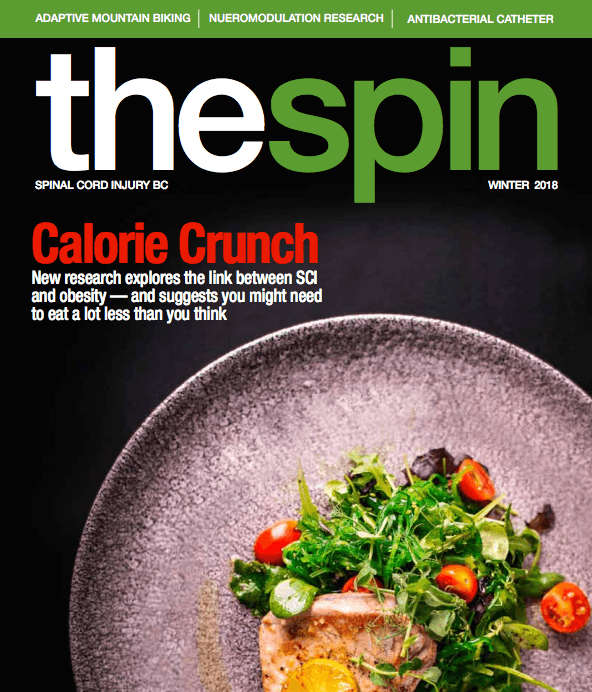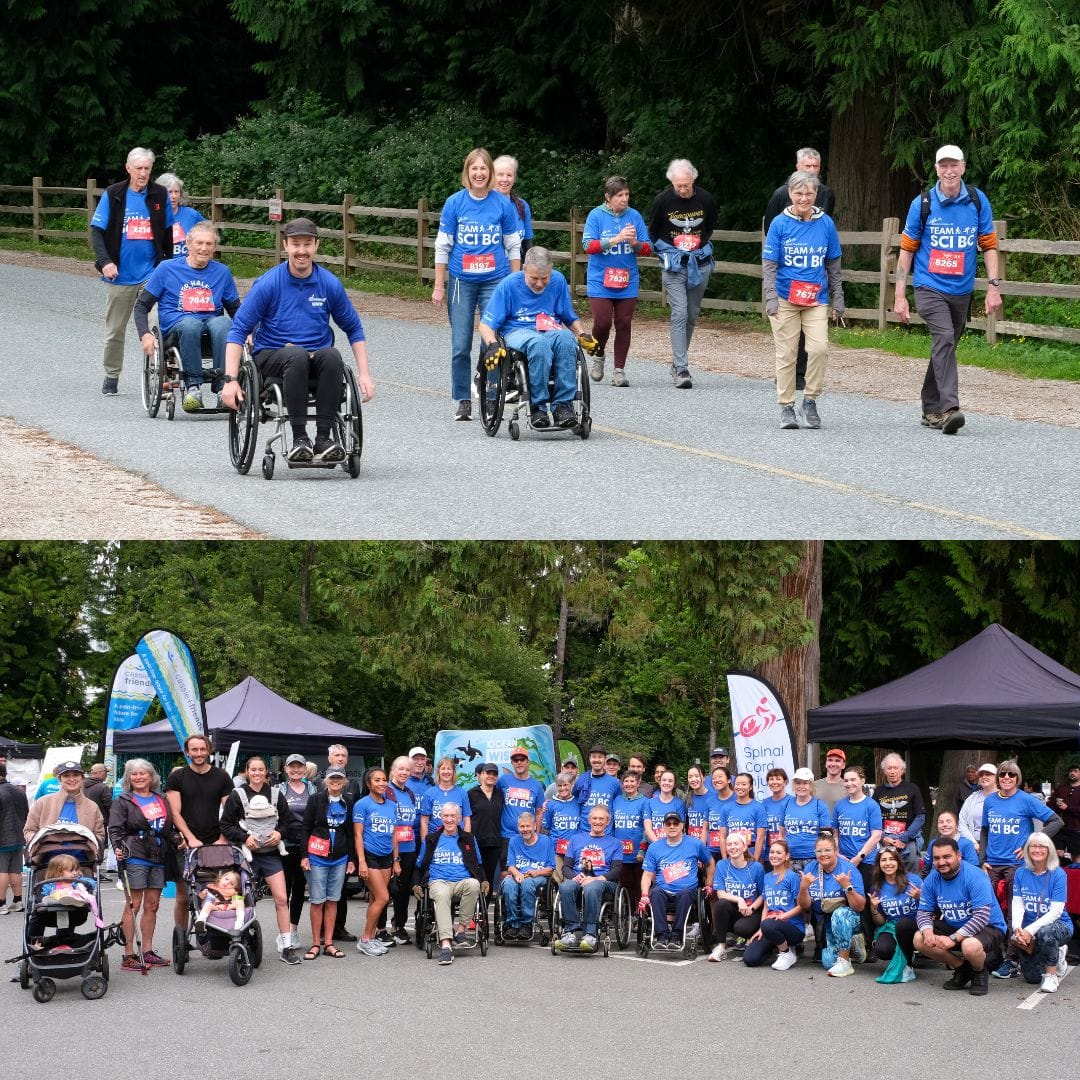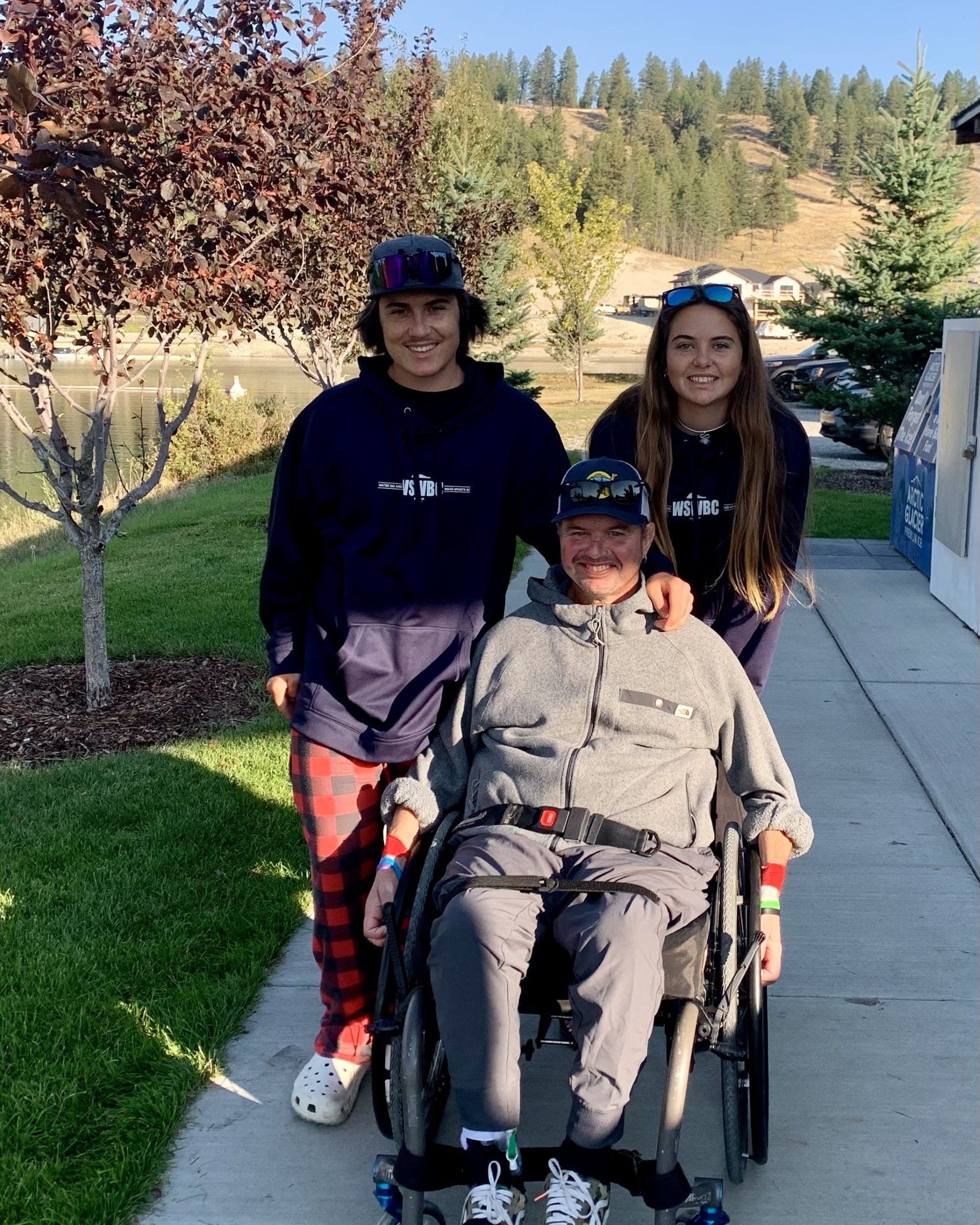University of Manitoba researcher Dr. Kristine Cowley is trying to determine just how much she and other people with quadriplegia should—or should not—be eating.

Here’s a universal truth for every person on this planet: the energy we consume in food or beverages must not exceed the our energy we expend through activity and exercise, or we’ll end up storing it as fat. Achieving this balance is difficult for many people.
But it can be particularly problematic for people with SCI, and especially people with quadriplegia, according to Dr. Kristine Cowley, Assistant Professor in the University of Manitoba’s department of Physiology & Pathophysiology.
“For most people living with SCI, excess weight gain is a huge problem,” says Cowley, who is herself a C8 quadriplegic. “Initially, when each person goes through rehab, there are way too many things going on to focus on exercise and maintaining health in their life after injury. At the same time, every person paralyzed loses a great deal of muscle mass in their legs. For those with quadriplegia, the problems are even more drastic, because in addition to losing the ability to move their legs or trunk, they also lose the ability to support exercise with their sympathetic nervous system. People with tetraplegia cannot increase their heart rate, sweat in response to heat, or activate the neural systems that support prolonged movement.”
Because of this, says Cowley, many people with quadriplegia are overweight and even obese. In turn, this puts people at much increased risk of diabetes and heart disease, in addition to experiencing greater and greater difficulty in moving around, transferring and dressing.
What can we do?
 Logically, the easiest way to address this problem is to lower the amount of calories people with quadriplegia put into their bodies until it balances with their energy expenditures. But as Cowley discovered, it’s difficult to determine this, because there’s been so little research done to determine the energy expended in a day by the average person with quadriplegia.
Logically, the easiest way to address this problem is to lower the amount of calories people with quadriplegia put into their bodies until it balances with their energy expenditures. But as Cowley discovered, it’s difficult to determine this, because there’s been so little research done to determine the energy expended in a day by the average person with quadriplegia.
“Everyone knows they need to eat less than before injury, but how much less?” she asks. For Cowley, there was also personal motivation to learn more. As a former Paralympian (in Barcelona, she won double gold in wheelchair racing), she had little problem keeping her weight down in the first few years after her injury.
“After I quit racing, I still exercised, just not as much,” she says. “I then started to put on weight, although it got a bit better when I became pregnant because I was eating so healthily. But after my kids were born, I got back on the gradual weight gain train … it’s been a constant struggle, and it’s getting worse as I get older.”
The study
With funding and approvals in place, Cowley and her colleagues got down to the business of conducting the study.
They recruited 25 people with quadriplegia, ranging in injury level from C4/5 to C8, and from complete to incomplete. Over the course of the study, participants were tested to determine their body composition, their energy expenditure while at rest, and their energy expenditure while performing a “steady state” exercise—an activity they could do for a relatively long period of time. The three choices were arm ergometry, wheeling a manual chair indoors on a flat cement surface, and handcycling.
“Our main goal,” explains Cowley, “was to use this information so we could estimate how much energy a person with quadriplegia would use over the course of a day, and then to compare this to the values to what you would get if you were to enter your age, gender, height and weight into a reputable online energy-expense calculator, which are, of course, only designed for able-bodied people. This way, we will have a better idea of how much we should reduce our daily calorie intake in order to balance our energy use with our food intake to reduce weight gain.”
The eye-opening results were published in the September 19th issue of the journal Frontiers of Physiology.
Three important findings:
- Most participants had sufficient body fat to be classified as obese—in fact, only two were not.
- The energy they expended while resting was significantly lower than that of able-bodied people with the same physical characteristics—age, gender, weight, and height. Basically, an inactive male with complete quadriplegia would expend only 74 percent of the energy a sedentary, able-bodied person of similar age, height, and weight would expend.
- The participants also used much less energy during steady-state exercise than able-bodied people with similar physical characteristics. Those able to do moderate intensity exercise for about an hour would expend about 79 percent of that of an able-bodied person. For those able to do high intensity exercise, plus be active in a manual wheelchair during the day, their energy expenditure would still only be about 88 percent of a comparable able-bodied person.
So what does all this mean?
“Basically, if they can’t exercise or choose not to, most people with quadriplegia will need to reduce their daily food calorie intake to less than 74 percent of the amount suggested by online calculators for an able-bodied person of the same age, height, weight and gender,” says Cowley. “And some people with very low levels of energy use while resting will have to reduce food calories even more, to possibly less than 60 percent of an able-bodied person with similar characteristics.”
Moving forward, Cowley and her colleagues are trying to determine how people with quadriplegia can either increase the duration of time they can spend exercising, or increase the intensity of exercise they can maintain, but in such a way that the risk of dreaded overuse injuries is minimized. High intensity interval training (HITT) or functional electrical stimulation (FES) exercise are two options being considered.
“We also think that some consideration should be given to developing quadriplegic-specific dietary guidelines,” she says. “Such guidelines may also be useful for people with paraplegia-level injury with very sedentary levels of activity. You can imagine that, if a person is trying to lose weight, and only requires about 1,100 calories per day, then providing a calorie deficit of say 200 calories per day means they should only consume 900 calories per day. Some people may need to consume even less food energy. Therefore, quadriplegic-specific food guidelines should target food choices that provide a sufficient range of foods to meet the minimum daily recommendations of vitamins, minerals and essential amino acids, while providing sufficient fibre, etc. Definitely, at these low levels of food intake, taking a vitamin/mineral supplement would likely be needed.”
If you have thoughts on the value of such guidelines, or would like to relay your own experiences with weight management, Cowley invites you to email her at Kristine.Cowley@umanitoba.ca.

This article first appeared in our Winter 2018 issue of The Spin, alongside other stories including:
- It’s All Downhill From Here: aMTB
- Calorie Crunch: Obesity and SCI
- Moving Matters
- and more!
Read the full Winter 2018 issue of The Spin online! Have an idea for a future issue of The Spin? Pitch your idea to thespin@sci-bc.ca!



